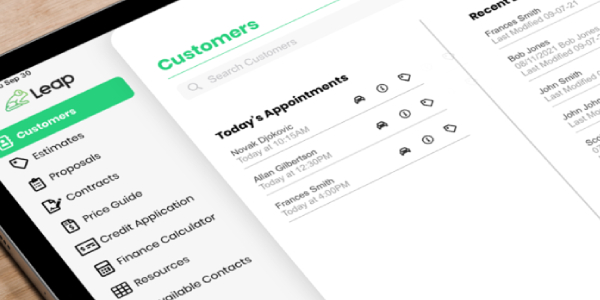Restructure Your Payment Terms to Survive the COVID-19 Crisis

By Cotney Consulting Group.
There has never been a more critical time in recent history to safeguard your companies cash reserves.
Besides the obvious solution of collecting money owed, it is time to proactively negotiate and restructure your payment terms for your projects and services.
As shelter in place orders continue to come down from officials, so are the orders to close down construction sites. New York State is the most recent to close down all construction except for emergency services only, and more are expected over the upcoming weeks.
Emergency Repair and Service Work
Now is not the time to keep doing business as usual. Send a truck in response to the customer needs and bill on time and material, then get the invoice to the customer on your regular billing cycle. Whether an existing or new customer, these below tips will help manage your cash by improving on your terms.
-
Provide your customer with a “Not to Exceed Price” before going out and making an emergency repair. Your customers will know what to expect, and if it is more than they are willing to spend, you know that upfront before you bankrolled the labor and materials for the work.
-
By providing an “NTE,” you can get paid in advance or at the time of service via credit card or another acceptable payment method you negotiated.
-
If you do choose a time and material billing for your clients, you must make sure that you are invoicing daily. The longer you wait to get the invoice out, the greater the chance will be that you will not receive payment for the services you performed.
Contractual Agreements Direct with Owners (Commercial or Residential)
-
Deposit Payments – Your deposit request should be an amount that does not put you out of pocket with your start-up cost and material costs delivered to the site.
-
Deposits should be either paid in advance or available at the site the day you begin loading the project.
-
-
Payment Terms Examples (Taylor your actual payment terms per your business structure)
-
Residential
-
1/3 deposit
-
Second 1/3 due at 50%-60% of overall progress completion
-
Final 1/3 due upon completion
-
-
Commercial
-
25% payment due upon loading project
-
Next 50% of contract amount payment due upon 50% completion
-
Next 20% of contract amount payment due upon 90% completion
-
Final 5% due upon completion
-
-
Important Takeaways on Payment Terms
-
The above examples are sample recommendations. You need to create your specific terms based upon your relationship with your clients.
-
Regardless of what the exact terms are you decide to offer, remember your not a banker. In these economic conditions that are likely to worsen by the COVID-19 Pandemic, you will put your company at considerable risk if you are not diligent on how you get paid.
-
-
Contractual Terms to Avoid Working for General Contractors
-
Extended Progress Payment and Final Payment Terms
-
Pay close attention to when the application is due to the contractor; when the owner will pay them, and how many days after that, you will receive payment. It may look like you are on a 30 – 45-day payment cycle, but if you add the month you are invoicing for, and the time of owner makes payment to the GC, you could be waiting 90 to 120 days for your payment.
-
When will you receive the final payment? It is not uncommon to see a clause that states you will not receive your last payment until the project has been completed in full by all trades, accepted, and turned over to the owner. I have seen contractors not receive their final payment until 12 to 24 months after they were completed and off the project.
-
-
Avoid Pay-when-Paid and Pay-if-Paid
-
These provisions generally provide that a prime contractor’s obligation to pay the subcontractor is contingent upon receipt of payment by the owner to the prime contractor.
-
These provisions can cause significant hardship and cash flow issues and can break the back of most contractors, especially in the turbulent economic times ahead.
-
Contractors who fail to pay attention and take control of their contractual payment terms will find themselves in an unsupportable position and unable to obtain payment from the owner or prime contractor. Diligence during the negotiation and contract execution stage is crucial to keep your business in a cash favorable operational position.
Learn more about Cotney Consulting Group on their RCS directory.






















Comments
Leave a Reply
Have an account? Login to leave a comment!
Sign In